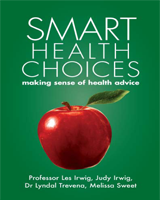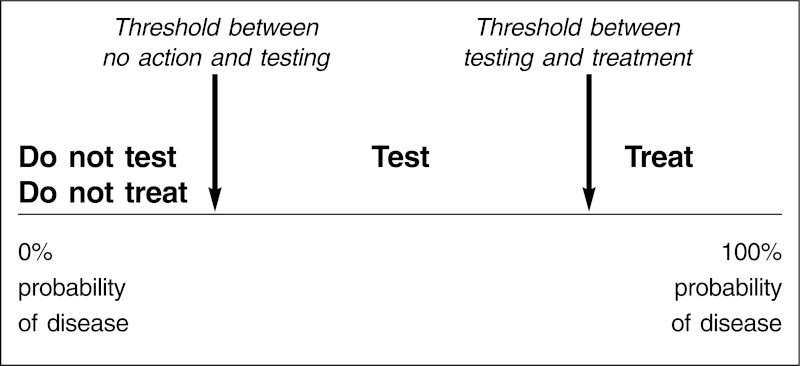All rights reserved. No part of this publication may be reproduced, stored in any retrieval system or transmitted in any form or by any means, electronic, mechanical, photocopying, recording or otherwise, without the prior permission of the publishers and copyright holder or in the case of reprographic reproduction in accordance with the terms of licences issued by the appropriate Reprographic Rights Organisation.
NCBI Bookshelf. A service of the National Library of Medicine, National Institutes of Health.
Irwig L, Irwig J, Trevena L, et al. Smart Health Choices: Making Sense of Health Advice. London: Hammersmith Press; 2008.

Smart Health Choices: Making Sense of Health Advice.
Show detailsSuppose that you have a cough that has persisted for several days. Your doctor tells you that it should be treated with antibiotics if it is a bacterial infection. You could:
- wait to see if it clears up without treatment
- treat with antibiotics in case there is a bacterial chest infection
- have a test to establish whether there is a bacterial chest infection.
How you decide goes something like this: if the probability that the cough is caused by a bacterial chest infection is 0 per cent, you clearly would not have antibiotics. On the other hand, if the probability is 100 per cent, you would take antibiotics. Anywhere between these extremes a diagnostic test would help to determine the chance that the infection is bacterial. So why not just go ahead and have a test? For two reasons: first, there are almost always harms associated with tests and, second, a test does not guarantee absolute certainty about the diagnosis. One way of dealing with this uncertainty is to use the decision threshold, which is illustrated by the following example.
Say your practitioner tells you that the probability of your having a bacterial infection is less than 10 per cent. You might decide to wait a few days to see if you feel better without any treatment. Ten per cent may be your threshold below which the harms of a test or treatment outweigh its potential benefit. If, on the other hand, your practitioner thinks there is a very high probability of a bacterial infection, say above 90 per cent, a course of antibiotics may be the best way to go. Ninety per cent, in this case, may be your threshold above which treatment is advisable without undergoing a test. This is because the benefit of treatment outweighs the potential harms of not treating, of the test itself and of the delay while waiting for a test result.
But what if your practitioner tells you that the probability of bacterial infection is about 50 per cent? This is between your thresholds for doing nothing (below 10 per cent) or taking antibiotics (above 90 per cent). In this case, having a diagnostic test to establish the real cause of the cough may be a good choice. These concepts are summarised in the Figure below.
To summarise, using the decision threshold method of deciding the best course of action requires that you and your practitioner have an estimate of your chance of having a particular disease, and comparing that to thresholds below which it would be best not to treat and above which it would be best to treat. Only between these thresholds can a test be of any help.
How do you or your practitioner decide exactly where the thresholds are? It really depends on the benefits and harms of treating or not treating. Suppose, for example, a safe and effective treatment exists for a disease that you may have. This would lower the threshold above which to treat because there would be less reason to avoid treatment. By the same token, if the only diagnostic test available is invasive (an aggressive procedure) and not very accurate, you may decide either to ‘wait and watch’ or to treat (just in case) and avoid the test.
- Decision thresholds - Smart Health ChoicesDecision thresholds - Smart Health Choices
Your browsing activity is empty.
Activity recording is turned off.
See more...
